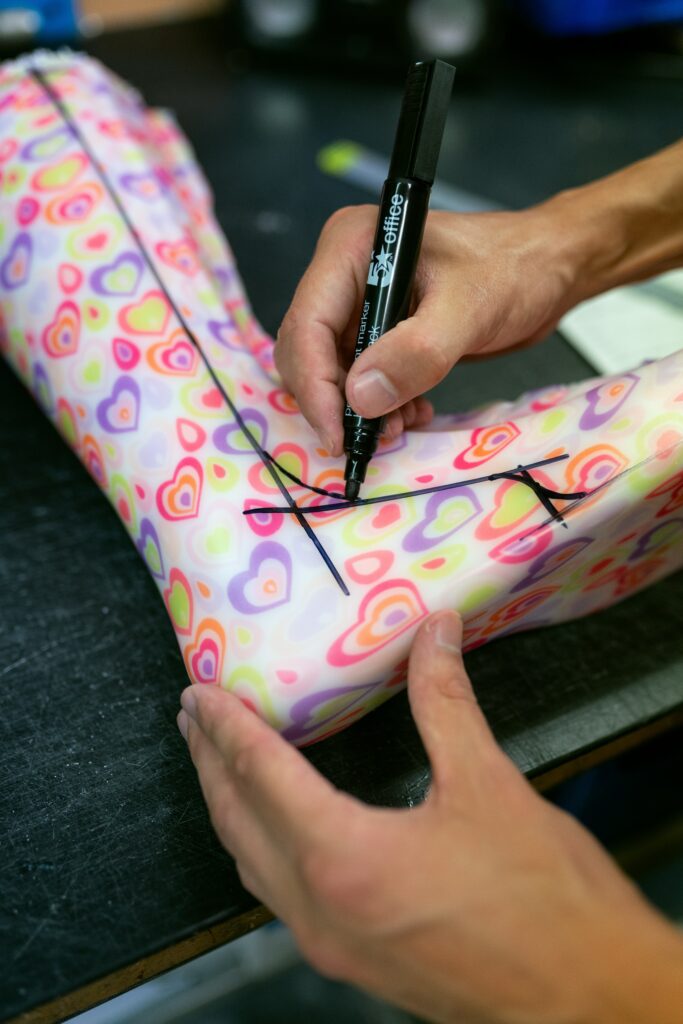Manufacturers can use plastic injection molding to expedite product development after rapid prototyping (RP). Learn more about this 3D printing alternative to streamlining designs and innovating inventories. Here is what you need to know.
Plastic injection molding allows product developers to innovate and manufacturers to deliver with reduced costs and decreased waste. It is an efficient, cost-effective fabrication technique with multiple benefits and diverse applications. Understanding how it works can help teams determine processes and design components that always fit the bill.
This blog explores plastic injection molding to help you grasp its potential. We’ll examine the fundamentals, molding cycle, benefits, and critical design considerations. Then, we’ll discuss PIM challenges in rapid prototyping and advanced techniques to help innovators do what they do best. Let’s make it happen.
Table of Contents
Plastic Injection Moulding Definition
The Role of PIM in Modern Manufacturing
The Fundamentals of Plastic Injection Moulding
Benefits of Plastic Injection Moulding in Rapid Prototyping
#2. Complex Design Capabilities
#3. Design Consistency and Repeatability
#4. At-Scale Cost-Effectiveness
#5. Material Performance Evaluation
Critical Design Considerations
Plastic Injection Moulding Challenges and Solutions in RP
Advanced Techniques and Innovations
Automation and Industry 4.0 Implications
Plastic Injection Molding Definition
What is plastic injection molding (PIM), and where did it all begin? Modern manufacturing produces many plastic components and everyday objects across multiple industries. Technicians leverage molten plastic material and a mold cavity to create unique products consistently. This process is how we get our bottles, toys, household goods, and automotive parts.
PIM involves several steps to shape and solidify the molten materials. Experts can create intricate geometries and custom dimensions using precision manufacturing techniques and digital fabrication tools. Many teams utilize rapid prototyping and CAD computer-aided design to assist engineers during development.
Plastic injection molding offers enhanced repeatability and rapid iterative abilities. The methodology is standard for creating precise parts without a massive time investment. Teams can design molds, prepare materials, and inject plastic under high pressure without extensive setup delays or continual reconfiguration requirements.

We offer fast, high-quality, tailored PROTOTYPING solutions for leading companies in a wide range of industries.
superior Rapid PROTOTYPING
A Brief History
This innovative fabrication technique first emerged in the mid-20th century, but manufacturing technologies have come a long way since the beginning. James Watson Hendry’s 1946 patent paved the way for PIM with screw injection machining to enhance design precision and productivity. By the 1980s, computer-aided design (CAD) and computer-aided manufacturing (CAM) software increased industry capabilities tenfold.
The Role of PIM in Modern Manufacturing
Plastic injection molding is a transformative force in today’s manufacturing landscape. Despite product intricacies and market fluctuations, it has helped redefine production paradigms with fast and efficient fabrication. Teams can quickly replicate designs and fuel widespread innovation through reliable functionality and aesthetics.
Engineers use PIM for manufacturing electronics, consumer goods, medical instruments, and custom products. This revolutionary technique has become the cornerstone of multiple industrial sectors, including automotive, aerospace, agriculture, and fashion. It underpins economic growth and helps brands ensure long-term competitiveness.
The technology’s impact on modern manufacturing is multifaceted and depends on industry requirements, production standards, and applications. Regardless, plastic injection molding encourages design ingenuity and helps facilitate mass production with less oversight for quality assurance. It is adaptable, durable, lightweight, and streamlined to help teams optimize project timelines.
The Fundamentals of Plastic Injection Molding
PIM consists of multiple stages and fundamental processes to prepare molds and build custom designs. Most teams will move through these four steps:
- Mold Preparation
- Material Melting
- Injection
- Cooling
Mold prep involves developing a tailored geometry based on the manufacturer’s capabilities and the designer’s requirements. Next is material melting, where experts turn plastic resin pellets into a liquid for the next step. An injection follows, with the molten material forced with high pressure into a mold. Then comes cooling, which can take several hours before experts trim, refine, or finish the design.
Plastic injection molding offers high-efficiency production options to enable intricate but consistent outcomes. It helps drive innovation by accelerating production cycles, reducing material waste, and cutting manufacturing costs for startups and competitive industries.
Core Components
Let’s look at the core components to understand how PIM works.
- Mold
- Clamping Unit
- Injection Rig
- CAD Software
- Rapid Prototyping
In plastic injection molding, the mold is a precision-engineered cavity for defining shapes and features in the final design. The clamping unit helps hold the mold in place during the injection process. It also exerts the necessary force for keeping molds closed while the molten plastic cools.
Injection rigs insert the molten plastic resin pellets into the secured mold with a heated barrel, screw, and nozzle. Operators can control the material flow speeds and densities with automated systems. Many teams use CAD software to create detailed product mockups and mold designs. They can visualize features, measurements, and modifications before mass production.
Advanced manufacturing companies leverage RP to create physical models of products using 3D printing, additive manufacturing, and CNC machining. This step allows engineers to validate designs, test functionality, and identify potential problems ahead of schedule. Some also use this step to determine suitable plastic types and adapt molding cycles to meet specific goals.
Plastic Types and Uses
PIM techniques allow manufacturers to experiment with different plastic types for maximum quality, efficiency, and affordability. Experts determine the appropriate materials based on several factors, including the desired outcome, required tolerances, and timeline constraints. Standard plastics in plastic injection molding include:
- Polyethene (PE) – Bottles, containers, pipes, and toys
- Polypropylene (PP) – Automotive parts, consumer goods, and packaging
- Polystyrene (PS) – Electronics, binding, recreational items, and general-purpose goods
- Polyvinyl Chloride (PVC) – Plumbing, fittings, cables, footwear, and medical tubing
- Polycarbonate (PC) – Transparent products, eyewear, consumer electronics, and auto parts
- Polyamide (Nylon) – Engineering components, consumer goods, textiles, and aerospace parts
- Polyethylene Terephthalate (PET) – Food packaging, beverage containers, textiles, and fashion
- Polyurethane (PU) – Footwear, insulation, flexible components, and foam cushions
- Thermoplastic Elastomer (TPE) – Medical instruments, grips, seals, and gaskets
Discuss other plastic types with your PIM engineering team. Explore the different properties and determine how each option will impact your molding cycle. Use rapid prototyping, 3D printing, and other digital fabrication tools to streamline the process.
Benefits of Plastic Injection Molding in Rapid Prototyping
Plastic injection molding offers multiple benefits for manufacturers using rapid prototyping to design innovative products. Here are five advantages to consider:
#1. Speed and Efficiency
PIM processes let teams produce prototypes quickly and with minimal lead times. Mold setup is also expedient, allowing for multiple identical models within a single cycle.
#2. Complex Design Capabilities
Injection molding lets engineers create high-precision designs with intricate detailing. This benefit ensures prototypes closely resemble the final product’s features, surface finish, and dimensions.
#3. Design Consistency and Repeatability
Plastic injection molding delivers consistent results, offering high uniformity levels for streamlined production, functional testing, and distribution.
#4. At-Scale Cost-Effectiveness
Prototypes and products made through PIM processing can be fully functional off the block. Teams can perform realistic analyses to determine structural integrity and mechanical smoothness.
#5. Material Performance Evaluation
Using low-cost production-grade materials to make prototypes means more accessible material performance evaluations to determine strength, durability, chemical resistance, and thermal properties.
Plastic injection molding is a powerful manufacturing tool anchoring rapid prototyping with balanced speeds, repeatability, and accuracy. Ask your team for more details about refining designs and producing functional prototypes with PIM, CAD, and RP.
Critical Design Considerations
Proactive manufacturers using plastic injection molding must consider critical design factors like structural integrity, production ease, and ergonomics. Others must evaluate user experience, cost-effectiveness, and accessibility.
Project optimization with PIM means considering these four crucial components:
- Design for Manufacturability (DFM) lets teams manufacture various industries’ economic designs. The process simplifies complex features without compromising quality, shortening lead times and reducing costs.
- Mold Flow Analysis simulates how the molten materials move and solidify after injection. This step helps teams identify design issues like air traps, warpages, and sink marks.
- Draft angles and wall thickness help with mold ejection by minimizing friction, adhesion, and potential damage. It can also ensure consistent wall thickness and design uniformity.
- Gate types and locations are essential considerations for part quality and appearance. Proper gate selection also reduces cosmetic flaws, ensures even filling, and eliminates air pockets.
These critical design considerations aid in successful product design and inventory development. They help guarantee efficient production, sustainable manufacturing, and optimal performance. With the right approach, some steps can also cut costs and expedite time to market.
Plastic Injection Molding Challenges and Solutions in RP
Although plastic injection molding in rapid prototyping offers multiple advantages, it has unique challenges for designers and engineers. Manufacturers must address each concern to ensure successful outcomes with minimal shrinkage and warping.
For example, RP in PIM could pose unexpected limitations on design geometries and dimensions. Teams should simplify complexities to accommodate draft angles, wall thickness, and moldability factors. And since plastics shrink and warp while cooling in a mold, engineers must account for dimensional inaccuracies by compensating dimensions or using innovative cooling techniques.
Overcoming molding defects, sink marks, and weld lines can be tricky after uneven cooling and insufficient material flow. However, designers can streamline flow paths by adjusting gate locations, modifying cooling channels, and adapting mold structures to accommodate different geometries and materials.
Rapid prototyping can help ensure mechanical strength and thermal behavior before mass production or functional testing. RP also aligns production goals and industry standards with material selection to promote more productive analyses. Determine whether designs can withstand expected loads, handle different conditions, and perform under pressure using RP for plastic injection molding.
Advanced Techniques and Innovations
As the manufacturing industry continues expanding to include advanced technologies and digital fabrication tools, teams should watch for innovative solutions like these:
- Overholding – Layering materials to create a part with enhanced aesthetics (3D printing).
- Insert Molding – Integrating pre-formed components into a mold for assembly.
- Micro-Injection Molding – Producing intricate miniatures for delicate, highly complex projects.
- Multi-Material Molding – Combining materials to enable complex functionality.
Innovative techniques and advancements in plastic injection molding have pushed the boundaries of modern manufacturing. Discuss the possibilities with your team to develop a comprehensive, cost-effective plan.
Automation and Industry 4.0 Implications
Manufacturing, rapid prototyping, and plastic injection molding rely heavily on new technologies to thrive. Meanwhile, automation and Industry 4.0 revolutionize data integration and network collaborations. This advancement helps streamline digital fabrication processes for intelligent decision-making, optimized resource use, and sustainability.
While automation may displace some jobs, Industry 4.0 implications could create new roles for skilled professionals. Plastic injection molding in rapid prototyping is only one example of the meaningful connection between traditional manufacturing and future agility.
Conclusion
Plastic injection molding has transformed rapid prototyping, 3D printing, and digital fabrication with swift, cost-effective production of intricate designs. With automation and Industry 4.0, manufacturers can iterate high-precision products, test functionality, and bring products to market with fewer costs and less overhead.
PIM’s pivotal role in RP and fabrication means accurate, tangible models and expedited development cycles. It offers improved speeds, enhanced process versatility, and material flexibility unavailable through traditional processes. Embracing these technologies helps unlock potential for multiple industries, fostering accelerated innovation, decreased development expenses, and streamlined evaluations.
Develop a comprehensive manufacturing plan to determine how plastic injection molding in rapid prototyping could help your bottom line. Propel creative ideas from concept to completion with unparalleled efficiency in the new era of manufacturing excellence.
 About the Author
About the Author
James Murphy is the founder and CEO of HLH Rapid – a hybrid CNC machine shop fusing Western service and quality with Eurasian industry influences for over 14 years. His advanced enterprise uncovers cost-effective rapid injection molding techniques to remain unmatched by industry competitors. Murphy’s full-service fabrication and manufacturing methods span six dedicated zones, from 3D printing and vacuum casting to sheet metal prototyping and project management. His expertise also includes high-efficiency machining within strict yet volatile markets.
Murphy earned an MBA after becoming inspired by his father’s hands-on craftsmanship. As a budding entrepreneur, he taught English and studied Chinese to pursue pioneering objectives. His groundbreaking approach helps build the future by providing well-rounded manufacturing services to innovative Western businesses. When he’s not offering upscale RP and CNC, James enjoys art-house movies, Thai boxing, and spending time with his growing family.
Visit HLHRapid.com for an instant quote on rapid prototyping services.


